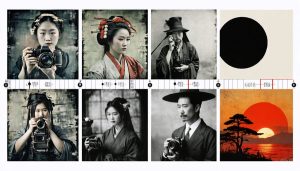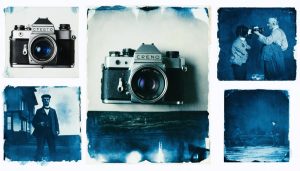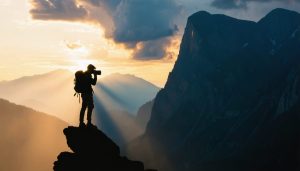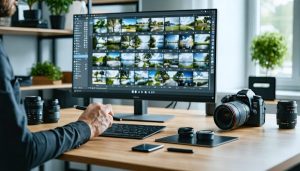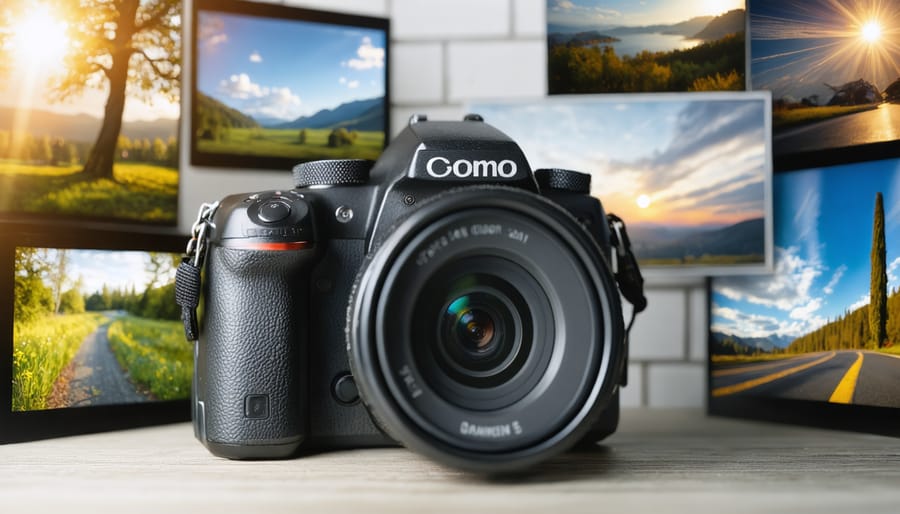
When you first unbox your new DSLR or mirrorless camera, that versatile lens that came bundled with it is your kit lens – a photographer’s first gateway into the world of interchangeable lens photography. Typically offering a zoom range of 18-55mm on crop sensors or 24-70mm on full-frame cameras, kit lenses strike a careful balance between affordability, versatility, and image quality.
While some photographers hastily dismiss kit lenses as “beginner gear,” these compact zoom lenses pack surprising capabilities. They excel at everyday photography, from family portraits to landscape shots, and their lightweight design makes them perfect travel companions. Their moderate wide-angle to short telephoto range covers most common shooting scenarios, while their close focusing abilities let you explore macro-style photography.
Understanding your kit lens isn’t just about knowing its specifications – it’s about recognizing both its strengths and limitations. Whether you’re capturing your first serious photographs or considering an upgrade, your kit lens can serve as an excellent learning tool for mastering fundamental photography concepts like aperture, focal length, and depth of field.
What Makes a Lens a ‘Kit Lens’?
Common Kit Lens Specifications
Most kit lenses for APS-C cameras typically offer a focal range of 18-55mm, which provides a versatile 3x zoom range equivalent to roughly 27-82.5mm on a full-frame camera. For those interested in mastering zoom lenses, it’s worth noting that these kit lenses usually feature variable aperture ranges of f/3.5-5.6, meaning the maximum aperture decreases as you zoom in.
Most modern kit lenses include image stabilization (IS, VR, or OS, depending on the manufacturer) and utilize plastic construction to keep costs and weight down. They typically weigh between 200-300 grams and accept 52mm or 58mm filters. The minimum focusing distance usually falls between 0.25-0.35 meters, allowing for decent close-up shots.
Full-frame camera kits often come with 24-70mm or 24-105mm lenses, offering similar versatility but with slightly better optical quality and construction. These lenses generally maintain the variable aperture design but might feature weather sealing and metal mount construction for improved durability.
Build Quality and Design Features
Kit lenses are typically constructed with a plastic body and mount to keep costs down, though some higher-end versions feature metal mounts for increased durability. While they may not feel as robust as premium lenses, modern kit lenses are built to withstand regular use and offer several practical design features.
Most kit lenses incorporate a collapsible design that makes them more compact when not in use – a welcome feature for photographers who value portability. They usually feature a zoom ring and a manual focus ring, though these might feel less smooth compared to premium lenses. The autofocus motors are generally adequate but not as fast or silent as those found in more expensive options.
Common design elements include filter threads for attaching UV filters or polarizers, though the diameter is usually smaller than premium lenses. Many kit lenses also feature image stabilization technology, which helps reduce camera shake when shooting handheld. While they might lack weather sealing and premium glass elements, kit lenses are engineered to deliver reliable performance for everyday photography needs.
Despite their budget-friendly construction, kit lenses are designed to be user-friendly and versatile, making them ideal companions for learning photography basics.
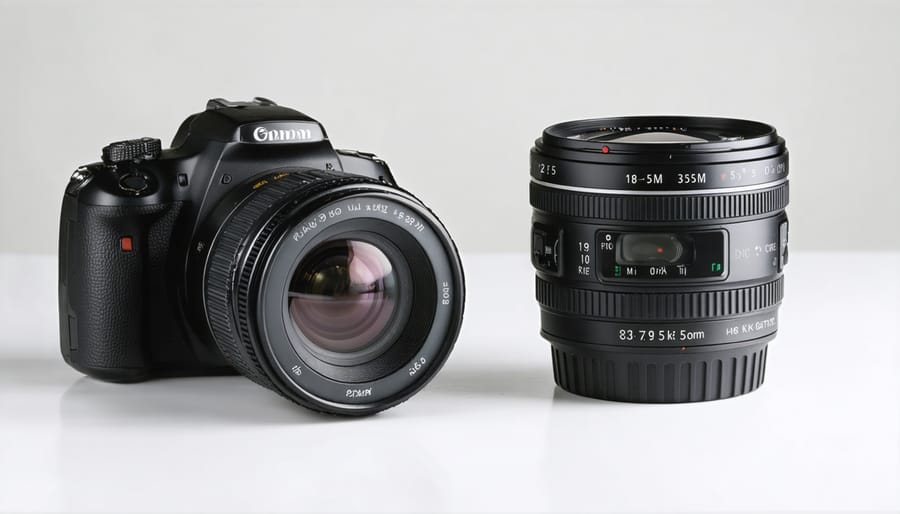
The Real Strengths of Kit Lenses
Versatility for Everyday Photography
Kit lenses truly shine in their adaptability to various everyday photography scenarios. Whether you’re capturing family gatherings, street scenes, or landscape vistas, these versatile lenses can handle most common shooting situations with surprising competence.
For portraits, while not offering the creamy bokeh of dedicated portrait lenses, kit lenses can still produce pleasing results, especially when shooting in well-lit environments. Their moderate telephoto range (typically extending to 55mm or longer) provides a flattering perspective for casual portraits and group shots.
In landscape photography, the wider end of kit lenses (usually 18mm on APS-C cameras) proves particularly useful. This focal length is wide enough to capture expansive scenes while maintaining good image quality when stopped down to f/8 or f/11. The variable aperture, often seen as a limitation, rarely poses issues in landscape work where smaller apertures are preferred for maximum depth of field.
For travel photography, kit lenses really prove their worth. Their lightweight design and zoom range cover most tourist photography needs, from architectural shots to street scenes. The moderate wide-angle to short telephoto range means you can capture both broad cityscapes and detailed architectural features without changing lenses.
Even in casual macro photography, kit lenses can perform adequately. While they won’t replace dedicated macro lenses, many kit lenses offer decent close-focusing capabilities, perfect for flowers, food photography, or detailed shots of larger objects.
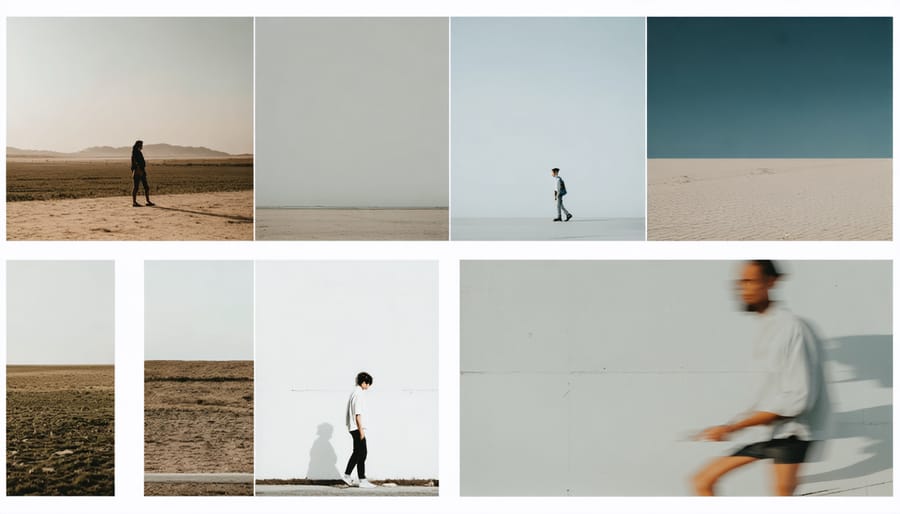
Learning Photography Fundamentals
Kit lenses are often unfairly dismissed as “basic,” but they actually serve as excellent tools for mastering photography fundamentals. Their versatile focal range forces you to learn composition across different perspectives, from wide-angle landscapes to medium telephoto portraits. This variety helps new photographers discover their preferred shooting styles without the initial investment in specialized lenses.
The moderate maximum aperture of kit lenses (typically f/3.5-5.6) encourages photographers to develop crucial skills in working with available light. You’ll learn to balance ISO, shutter speed, and aperture more thoughtfully than you might with a faster lens that lets you rely on wide apertures in all situations. This limitation actually becomes a strength in your photographic journey.
Kit lenses also teach you to move physically to frame your shots, rather than relying solely on zoom. This physical engagement with your environment often leads to more creative compositions and a better understanding of perspective. Their lightweight nature means you’re more likely to carry your camera everywhere, providing more opportunities to practice and develop your eye.
Moreover, the close focusing capabilities of most kit lenses allow you to experiment with basic macro photography, adding another dimension to your learning experience without additional equipment.
Creative Techniques with Your Kit Lens
Portrait and People Photography
While kit lenses might not be the first choice for professional portrait photographers, they can still help you create powerful visual stories through portraiture. The key lies in understanding your lens’s sweet spot and working with its limitations.
For portraits with kit lenses, try shooting between f/5.6 and f/8 for optimal sharpness. While you won’t get the dramatic background blur of a fast prime lens, you can still achieve pleasing separation by increasing the distance between your subject and the background. Position your subject at least 6-8 feet from any background elements, and zoom in to the longer end of your focal range.
Make the most of natural light by shooting during golden hour or in open shade. These conditions help compensate for the kit lens’s smaller maximum aperture while providing flattering illumination for your subjects. When composing your shots, focus on the eyes and position them within the frame’s upper third for more engaging portraits.
Don’t be afraid to experiment with environmental portraits, where the kit lens’s wider focal lengths become an advantage. Include context and surroundings to tell more complete stories about your subjects. Remember that creative composition and genuine expression matter more than technical specifications – many memorable portraits have been captured with kit lenses.
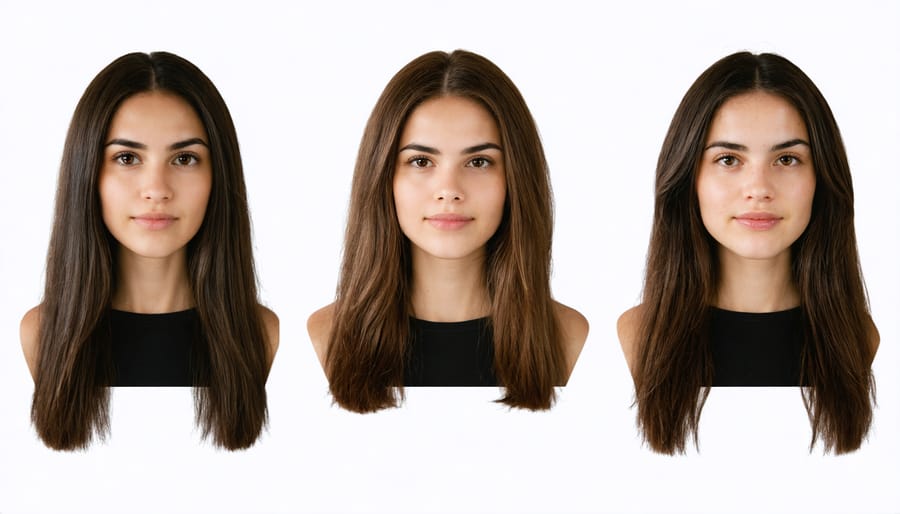
Landscape and Architecture
Kit lenses are surprisingly capable when it comes to landscape and architectural photography, where their typical focal range of 18-55mm proves particularly useful. The wide-angle end at 18mm allows you to capture sweeping vistas and towering buildings, while the ability to zoom in helps you frame more intimate landscape details or architectural elements.
When shooting landscapes with your kit lens, try setting it to f/8 or f/11 for optimal sharpness and depth of field. These aperture settings help ensure everything from the foreground to the background remains in focus. Early morning or late afternoon light works wonderfully with kit lenses, as the softer illumination helps minimize any lens flare issues that might occur with harsher midday sun.
For architecture, the kit lens’s wide end is perfect for capturing entire buildings, while the zoom capability lets you isolate interesting details like ornate windows or decorative elements. Be mindful of vertical lines when photographing buildings – your kit lens might introduce some barrel distortion at its widest settings, but this can often be corrected in post-processing.
To maximize sharpness, use a tripod whenever possible, especially in low-light conditions. Many kit lenses lack image stabilization, so steady support is crucial for crisp images. Consider using your lens’s “sweet spot” (usually around f/8) for the sharpest results, and don’t be afraid to experiment with different angles and perspectives to create more dynamic compositions.
Overcoming Kit Lens Limitations
While kit lenses have their limitations, there are several creative ways to work around these constraints and still capture impressive images. Let’s explore some practical strategies to maximize your kit lens’s potential.
First, embrace the sweet spot of your kit lens, typically between f/8 and f/11. At these apertures, you’ll achieve optimal sharpness and minimize common optical issues. When shooting landscapes or architecture, this aperture range will help you maintain clarity across the frame.
To overcome the limited maximum aperture, work with natural light to your advantage. Position your subjects near windows or shoot during golden hour when the light is most flattering. You can also use reflectors or basic lighting equipment to enhance available light without requiring a faster lens.
For portraits, step back and zoom in to around 50mm, which helps compress perspective and create more flattering facial features. While you won’t get the extreme background blur of a prime lens, you can maximize separation by keeping your subject far from the background and using the longest focal length available.
Combat soft corners by avoiding the extreme ends of your zoom range when possible. Instead, zoom with your feet or crop in post-processing if necessary. When shooting at wider angles, stop down to f/8 or smaller to improve corner sharpness.
Make the most of your kit lens’s close-focusing capabilities by experimenting with close-up photography. While not a true macro lens, many kit lenses can focus quite close, allowing you to capture interesting details and textures.
Consider using lens correction tools in your editing software to address distortion and vignetting. Most modern editing programs include lens profiles specifically for kit lenses, making corrections straightforward.
Remember that many renowned photographers started with kit lenses, proving that creativity and technique often matter more than expensive gear. Focus on mastering composition, lighting, and timing, and you’ll be surprised by what your kit lens can achieve.
While kit lenses often get a bad rap in photography circles, they’re far more capable than many photographers give them credit for. Throughout this article, we’ve explored how these versatile tools serve as excellent starting points for photographers, offering a balanced combination of functionality, convenience, and learning opportunities.
Remember that a kit lens’s greatest strength lies in its versatility. From landscape photography to casual portraits, these lenses can handle a wide range of shooting scenarios effectively. Their lightweight design, standard zoom range, and built-in image stabilization make them perfect companions for everyday photography and learning the fundamentals.
Rather than rushing to upgrade, take time to master your kit lens. Experiment with different focal lengths, practice working with its aperture limitations creatively, and challenge yourself to find unique perspectives. Many professional photographers started their journey with a kit lens, proving that it’s not the gear that makes great photos – it’s the photographer’s vision and skill.
Don’t let the “kit” label hold you back. Instead, view your kit lens as a valuable tool for developing your photographic eye and technical abilities. As you grow in your photography journey, you may eventually want to expand your lens collection, but your kit lens will always remain a reliable option for many shooting situations. After all, the best lens is the one you have with you, and a kit lens is more than capable of capturing beautiful, meaningful images.

